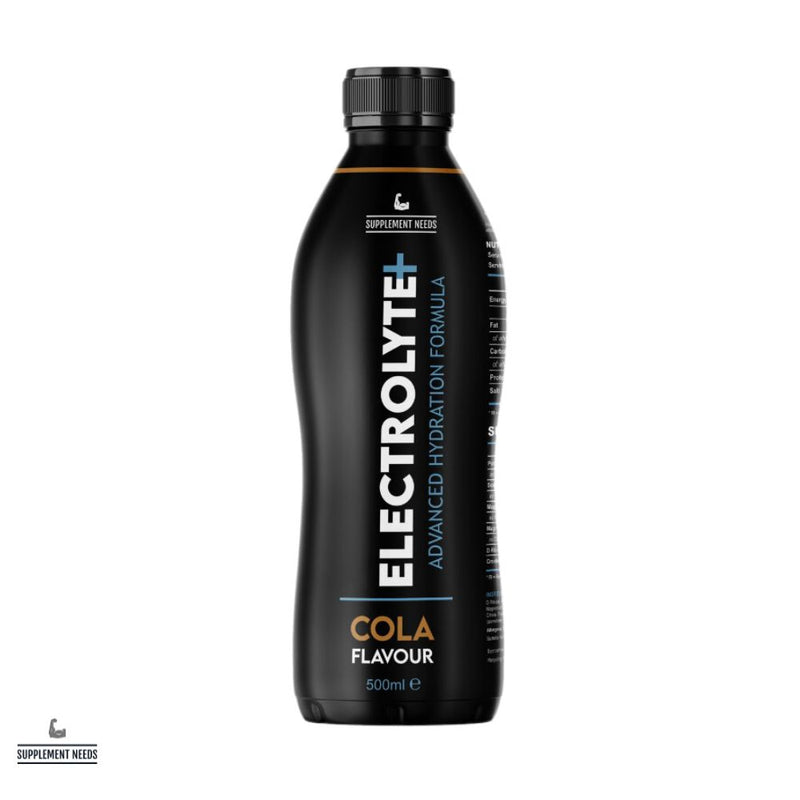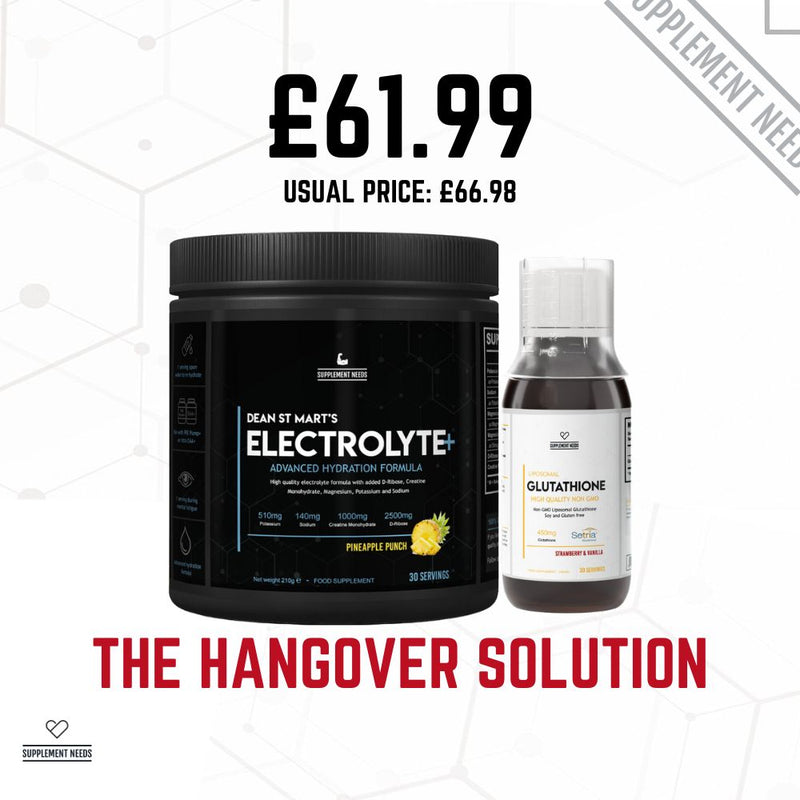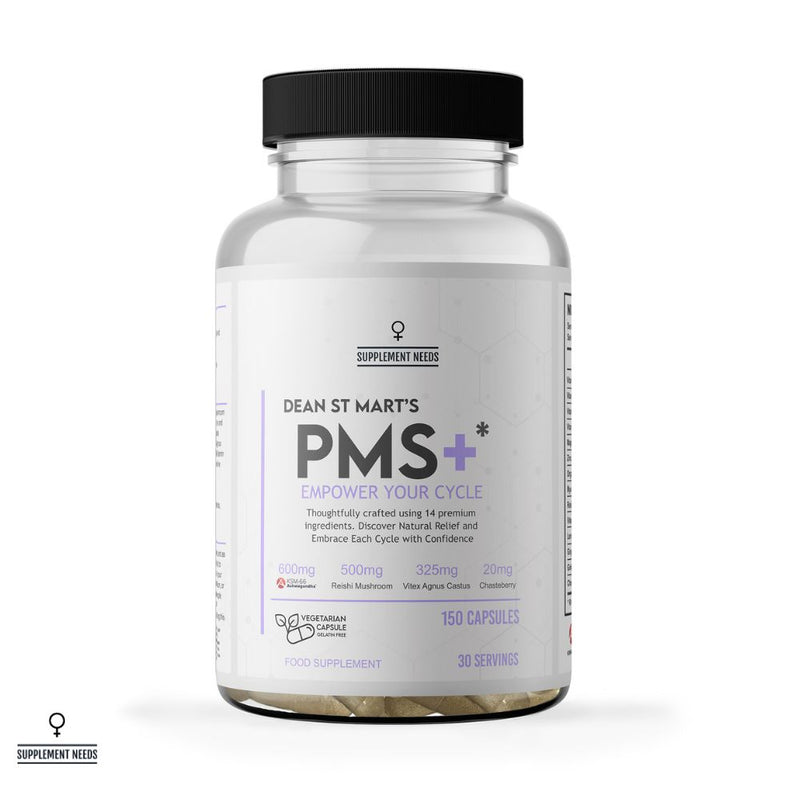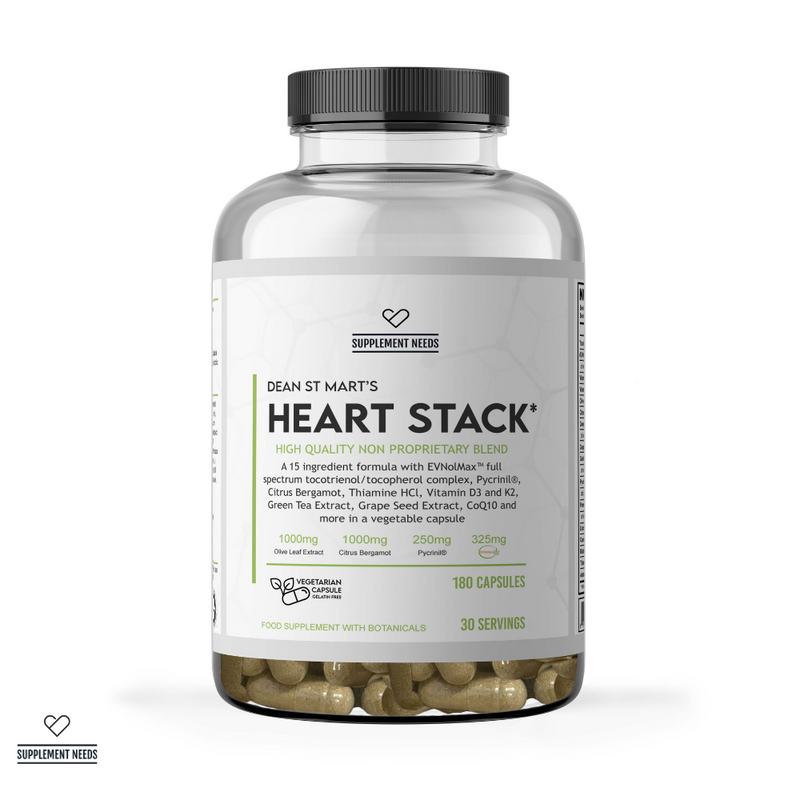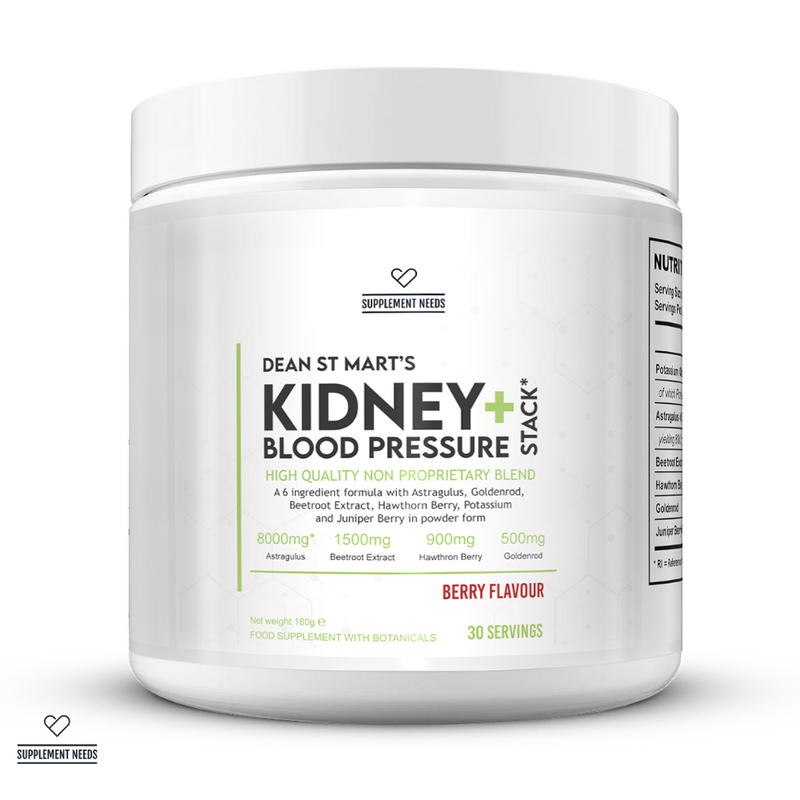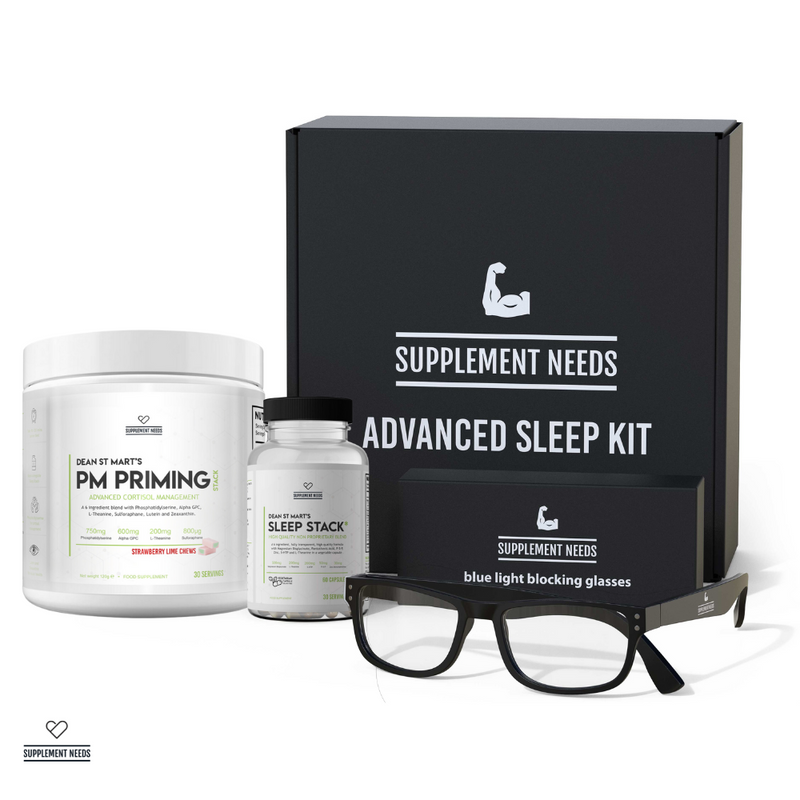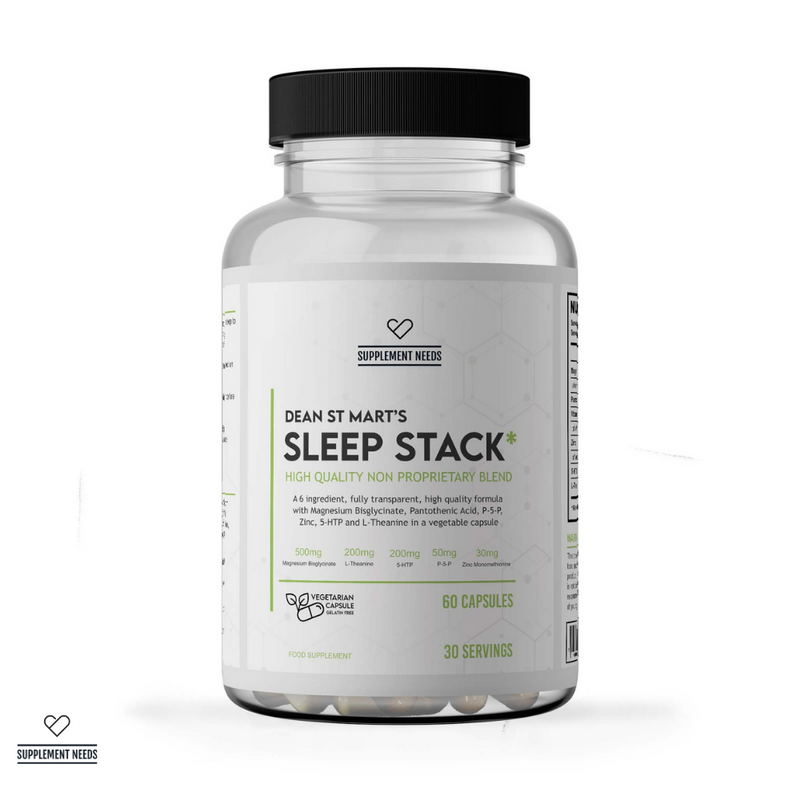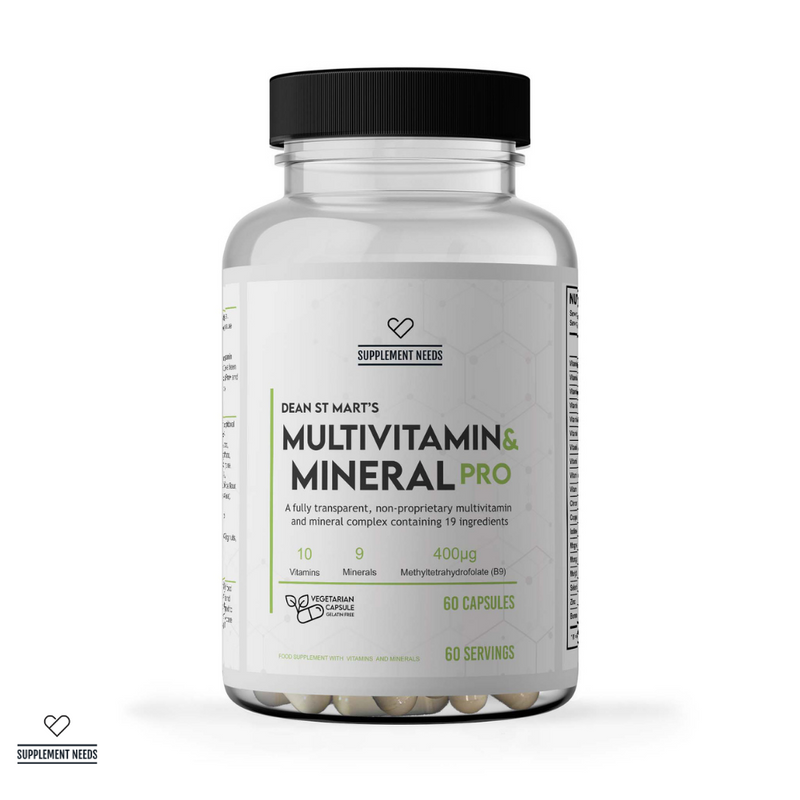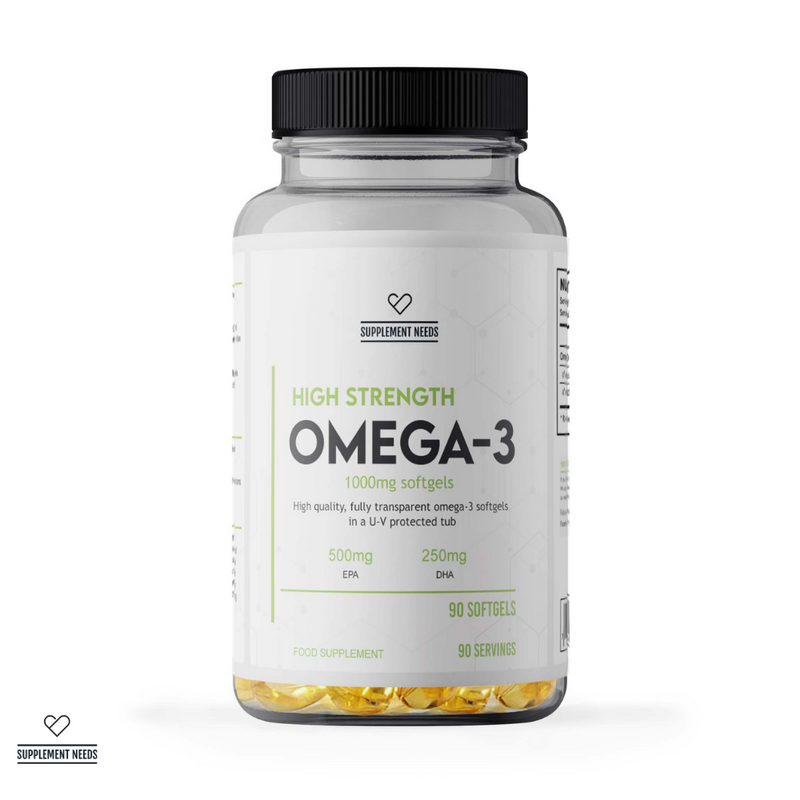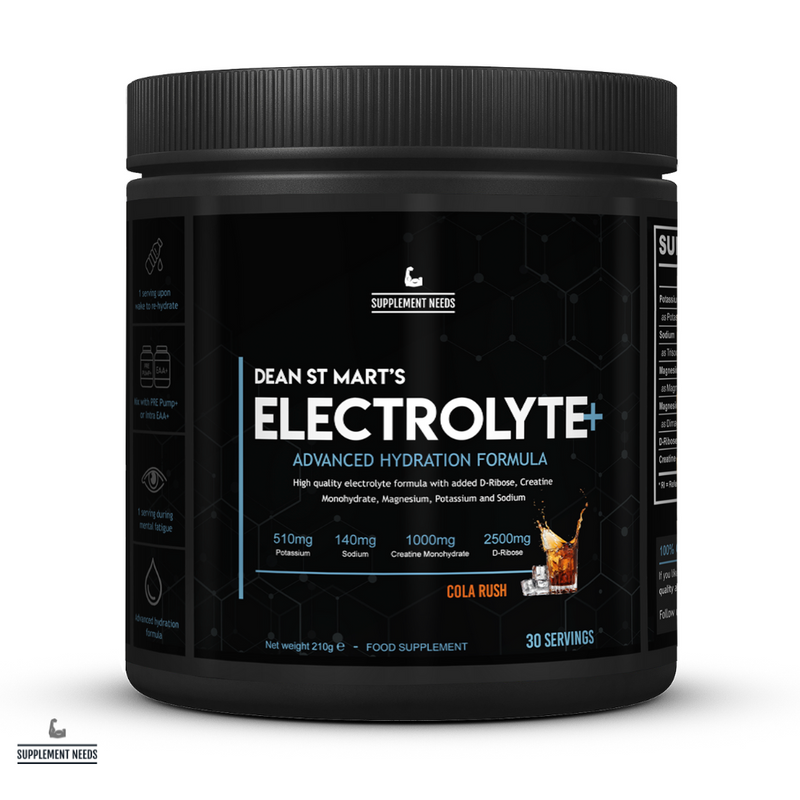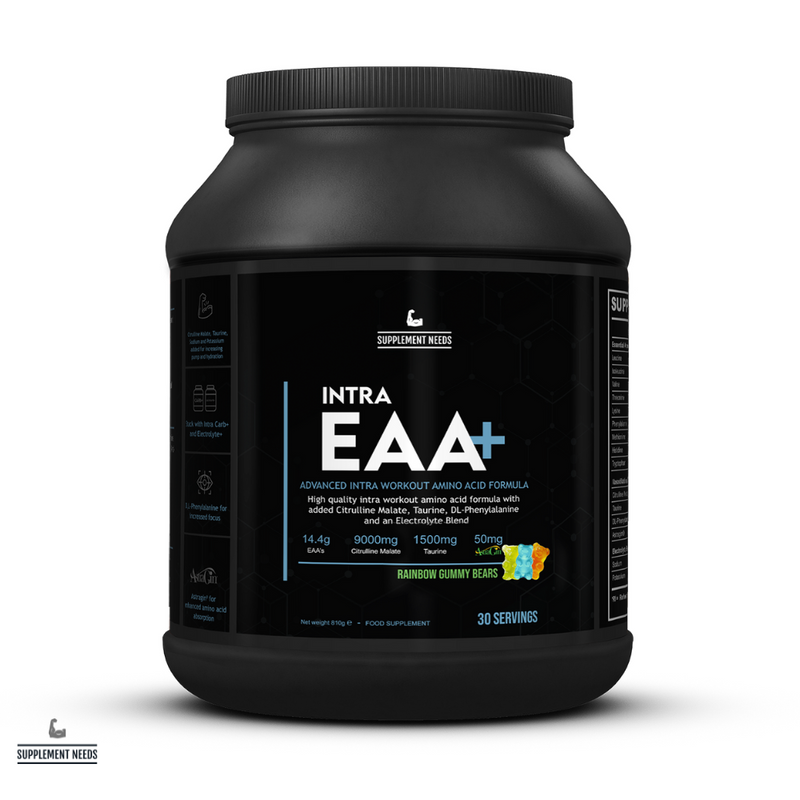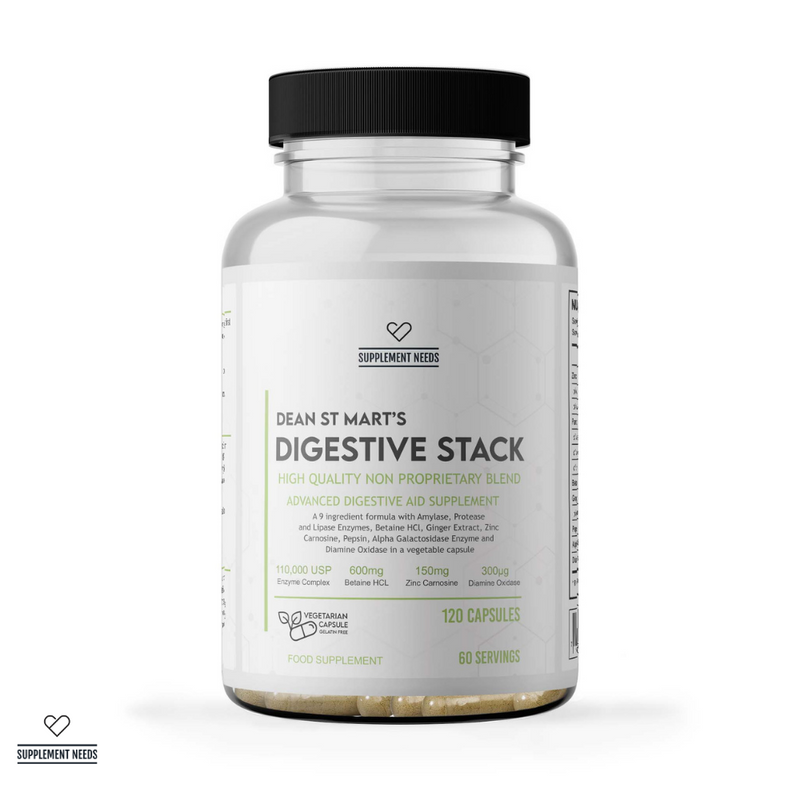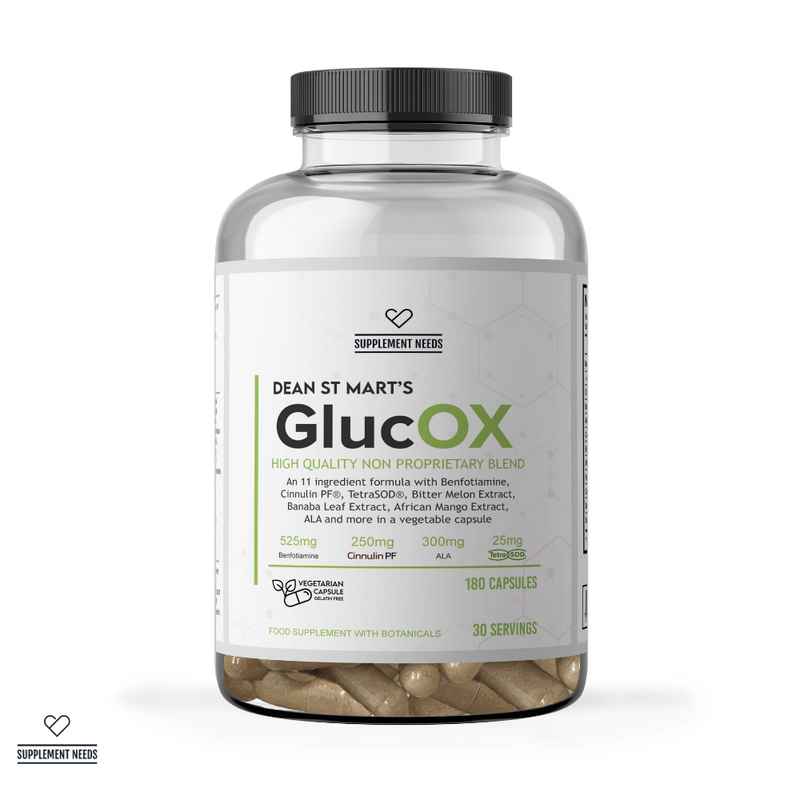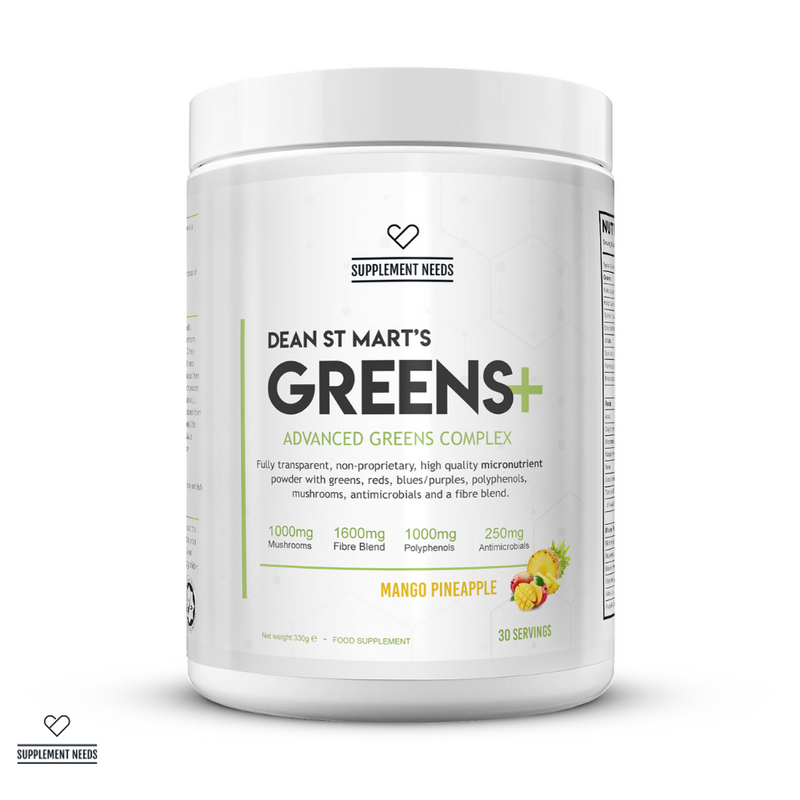If you’re serious about supplementing your body with additional vitamins, then you want to ensure the supplement you choose is as easy for your body to absorb as possible. Enter liposomal supplements. But, what exactly are they? And, how do they work? Keep reading to find out more…
What is a liposomal supplement?
The easiest way to think about liposomal supplements is in two parts. Their contents and their delivery mechanism:
- Contents - like other types of supplements, liposomal supplements are typically designed to deliver a concentrated dose of a single vitamin (e.g. Vitamin C) or other nutrients.
- Delivery mechanism - in contrast to other types of supplements, liposomal supplements use ‘liposomes’ to deliver the vitamin into your body.
We can effectively sum this up as follows:
“A liposomal supplement is a supplement that uses a liposome to surround and protect the contents of the supplement and thus ensure maximum absorption by the body”.
Whilst liposomal supplements seem like a relatively new type of supplement, they actually have decades of research behind them.
Liposomes were first discovered in the mid-1960s by British haematologist, Dr. Alec D Bangham1, who was experimenting with lipids, trying to ascertain how they behave when immersed in water.
His major discovery was that liposomes have a very close structural resemblance to human cell membranes2.
As one study3 characterises it, ‘Since the 1970s, liposomes have been investigated as potential drug delivery systems because of their biocompatibility and ability to incorporate both hydrophilic and hydrophobic therapeutic agents’. However, it wasn’t until the 1990s that ‘liposome technologies could create successful commercial products’.
Today, liposomal supplements are seen as the supplements of par excellence by many in the supplement industry.
What are liposomes?
Naturally, your next question is likely to be ‘what exactly are liposomes?’
The answer involves a dive into the world of chemistry…
In the most simple terms, liposomes can be thought of as being ‘protective microspheres’ that simultaneously help protect a vitamin as it travels through your gastrointestinal tract, and also aid in absorption by your body’s cells.
In crude terms, think of it as being like wrapping a vitamin in fat so that it is more easily absorbed by the body. It’s for good reason that the etymological root of liposomal is lipos - meaning ‘fat’ - and soma - meaning ‘body’.
Professor Mohammad Najlah - Professor of Pharmaceutics & Nanomedicine at Anglia Ruskin University - neatly describes liposomes as follows:
“They are nano-sized bubbles from a group of fatty or oily compounds called phospholipids - the building blocks of all the cells in your body. Liposomes can… form a similar structure to human cell membranes while retaining a liquid core”4.
That sounds fairly straightforward. So, how are liposomes made? The answer is a process called liposomal encapsulation technology (LET).
This technology involves surrounding or ‘encapsulating’ a vitamin (usually a water-soluble vitamin such as Vitamin C) in a liposome.
This liposome itself is made up of phospholipids. These are a type of lipid that are amphipathic, meaning they are a compound that contains both polar (water-soluble) and nonpolar (non-water-soluble) portions in their structure5.
As you can see from the illustration below, phospholipids have a lipophilic (non-water -soluble) tail and hydrophilic (water-soluble) head:

Phospholipids play an important role as they occur naturally in all living organisms and are major components of cell membranes. This is important because it’s the cell membranes that either allow or inhibit the absorption of a nutrient (such as a vitamin).
Think of it like this; by encapsulating a vitamin in a liposome you are making it resemble or ‘mirror’ the cell membranes already in your body. Thus, your cells are far more likely to absorb the nutrient encapsulated within the liposome.
An important part of a liposome is the ‘phospholipid bilayer’. As you’ll see from the illustration below, this is simply the way in which phospholipids are arranged within the liposome:

In this arrangement, the phospholipids are able to encapsulate a vitamin within what is often referred to as the ‘liposome bubble’. The result is a liposome that is able to transport a vitamin and provide maximum bioavailability:

In this form liposomes, with their hydrophobic and hydrophilic characteristics ‘are promising systems for drug delivery’6.
As one comprehensive study7 summarised the situation, ‘Recent research supports previous contentions that encapsulating vitamins and minerals with liposomes help improve overall bioavailability’.
Note - if you’re new to the world of supplements, you may be wondering what the term ‘bioavailability’ means. Without going into too much technical detail, it refers to the proportion of a vitamin/drug that can be completely absorbed by your body.
Why choose a liposomal supplement?
At this point, you hopefully have a clear understanding of what a liposomal supplement is. But, is it worth selecting a liposomal over a more traditional type of supplement?
Our answer, as you’d expect, is an emphatic yes. However, we won’t leave it at that. In this next section, we’ll take you through the reasons why you should choose a liposomal over a traditional vitamin supplement.
Superior bioavailability
This is the primary reason for choosing a liposomal supplement. A litany of studies supports the notion that liposomal supplements are more bioavailable than other types of supplement.
One double-blind, randomised and counterbalanced study of 34 healthy men and women compared the effects of a liposomal multivitamin supplement versus a non-liposomal multivitamin supplement.
The results were notable:
“Analysis of vitamin and mineral content in the blood after ingestion of the multivitamin supplements clearly indicated that ingesting a liposomal multivitamin supplement can affect the rate of appearance and/or clearance of some vitamins and minerals. In this regard, there was an overall interaction effect between the treatments, indicating that coating a multivitamin with liposomes altered the normal pharmacokinetic profiles”>sup>8.
A further study compared the efficacy of liposomal and non-liposomal forms of Ascorbic Acid (Vitamin C). This study concluded that:
“Liposomal encapsulated ascorbic acid (Vitamin C) shows well-organised morphological pattern, uniform particle size and high efficiency, which leads to enhanced bioavailability”9.
We appreciate this all may sound rather technical, so think about the bioavailability of liposomal supplements this way. Anytime you take a particular vitamin supplement (let’s say 5,000mg of Vitamin C), only a fraction of that vitamin will actually be fully absorbed by your body. In the case of water-soluble vitamins such as Vitamin C, any vitamin not absorbed will be passed in your urine. That can make for expensive trips to the toilet!
The aim of liposomal supplements is to ensure as much of the encapsulated vitamin can be absorbed by the body as possible.
Regular supplements versus liposomal supplements
At this point, it’s time for a short digression. Why is there such a difference in bioavailability between regular supplements and liposomal supplements?
The answer is in the way they’re ingested (or what is technically known as the ‘route of administration’ (ROA))10.
Firstly, both liposomal and regular, capsule-based supplements are ingested orally.
However, that’s where the similarity ends.
With a regular capsule supplement, your body will start digesting it the second it enters your mouth.
As we’ve written previously, your gastrointestinal tract uses a combination of mechanical and chemical digestion to break down foodstuffs. This includes the mouth, where saliva will begin to break down the vitamin capsule. Once the capsule has passed through your oesophagus and lower oesophageal sphincter it will enter your stomach.
This is where traditional capsule supplements can really struggle.
Your stomach acid is remarkably acidic, with a pH level between 1.5 and 211. That makes it stronger than the acid you get in a typical car battery (which will normally have a pH level of around 0.8).
This can potentially result in the vitamins contained within the supplement failing to reach the small intestine where they can be optimally absorbed. According to some estimates, only around 10% to 20% of the vitamins in a capsule-based supplement reach systemic circulation.
As you can see, this can be a suboptimal way of getting vitamins and minerals into your body.
So, how do liposomal supplements differ?
The answer lies in their cell-like mimicry. Thanks to their phospholipid bilayer, liposomal supplements can be absorbed at any point during their journey through your gastrointestinal tract. They can effectively ‘deliver’ their contents (e.g. vitamins) directly into the cells of your GI tract.
The result is that far more of the supplement can be absorbed, suffering less from the effects of digestion and/or oxidation. This improved bioavailability can also have the corollary effect of preserving mitochondrial energy.
The above is a rather simple explanation of how liposomal supplements are absorbed by the body. For those of you who want to understand the more technical aspects of liposomal absorption, it’s time to learn about endocytosis.
Endocytosis is the cellular process in which substances (such as the vitamin in your liposomal supplement) are brought into the cell12. More specifically, the absorption of liposomes involves a sub-branch of endocytosis called pinocytosis.
Also known as ‘cell drinking’, pinocytosis follows these steps:
- Invagination - this is the first step, which involves the cell membrane forming a small pocket (known as invagination).
- Uptake - the next step sees the pocket engulfing the liposomal supplement.
- Vesicle formation - once the pocket has fully engulfed the supplement, it ‘pinches off’ the external wall of the cell membrane to form a vesicle.
- Processing - once the vesicle has broken off into the cell it becomes a pinosome. At this point, a lipid exchange will take place, with useful molecules (such as vitamins) being used by the cell.

This isn’t a chapter-and-verse description of the process, but it should give you a solid understanding of how liposomal uptake occurs within your body.
Note - there are many other factors that can affect the absorption of supplements. These include your age and general level of health, circadian rhythm (e.g. the time of day you take a supplement), and the presence of other nutrients within your GI tract.
The other benefits of liposomal supplements
So far, we’ve majored on the bioavailability of liposomal supplements. That is their main and enduring benefit after all.
However, there are several benefits associated with liposomal supplements that we’d like to tell you about…
Non-invasive
If you want to achieve the maximum absorption of your supplements, but don’t want to go as far as injections, then a liposomal supplement is your best choice.
Taking a liposomal supplement, such as one produced by Supplement Needs, can be as simple as drinking a small 5ml ‘shot’ once a day. Easy!
Easy to consume
Not everyone can easily take capsules or tablets. Whether it’s a fear of choking, general difficulty swallowing (known as dysphagia) or dry mouth, there are numerous reasons why taking a supplement could be a daily torment.
The easiest way to avoid these issues - whilst continuing to supplement your diet - is to invest in a liposomal supplement. You’ll not only be getting a supplement with maximal bioavailability, but one that’s easy to take orally.
Cost-effective
The higher bioavailability of liposomal supplements over more traditional forms of supplement means they typically offer excellent value for money.
With only a small dose, you can receive a similar (or higher fraction) of a given vitamin, than you would if you took an equivalent capsule supplement.
Remember, studies13 have found that liposomal supplements can be significantly more bioavailable than non-liposomal forms.
To provide you with a very strong example, consider the case of Glutathione. Considered to be one of the body’s most powerful antioxidants (indeed, the ‘Master Antioxidant'), Glutathione is an exceptionally-popular antioxidant due to its ability to combat free radicals and thus fight cell damage.
As a tri-peptide, Glutathione is effectively hydrolysed once ingested in a capsule or powder form (in less technical terms, this means that the bonds between the compounds that constitute Glutathione ‘break’ when they interact with water).
Because of this, Glutathione is especially well suited to liposomal supplementation.
In fact, the oral bioavailability of liposomal Glutathione has been shown to be almost on par to intravenously administered Glutathione14.
If you’re particularly serious about assessing the impact of your own liposomal Glutathione supplementation, it is possible to assess the levels of gamma-glutamyl transferase (GGT) in your blood.
GGT is mainly found in the liver - one of the organs that can potentially benefit most from Glutathione supplementation. Should your GGT levels be too high (they should typically be between 16-20 U/L (units per litre)), then this can be indicative of hepatic damage. Therefore, if you’re supplementing Glutathione, you should see falling levels of GGT in your blood over time.
To sum up, in many instances (especially Glutathione!), the liposomal form will offer significant value for money!
Suitable for the delivery of both water-soluble and fat-soluble vitamins
Another highly attractive benefit of liposomes is that because they are amphipathic they can be used to deliver both water-soluble and fat-soluble vitamins to your cells.
This means, if you wish, you could potentially cover some of your main essential vitamin needs using liposomes alone.
How to spot the best liposomal supplements
If you’ve read this far, it’s likely you’re toying with the idea of investing in a liposomal supplement. And, we don’t blame you! They really do represent a massive breakthrough in the personal supplementation space.
However, like any emergent - and highly innovative - product, there are lots of imposters out there.
So, below, the Supplement Needs team has set out the key points to look for in your new liposomal supplement.
Price
Is a liposomal supplement making big claims whilst being ludicrously cheap?! Then we’re afraid it’s probably too good to be true.
Liposomal encapsulation technology is NOT cheap. As you’ll have read above, the technology to create effective liposomal supplements is still relatively new (with commercial liposomals only becoming available on a widespread basis in recent decades).
Whilst you shouldn’t be paying extortionate prices, if a liposomal supplement is priced at bargain-basement prices, please be suspicious…
Has a watery consistency
Unfortunately, due to the relative high cost involved in the production of liposomal supplements, some unscrupulous brands and manufacturers have chosen to ‘bulk out’ their liposomals with bulking agents.
This can result in a thick, almost gel-like consistency.
This is effectively giving you less value for money…
Taste
The best liposomal supplements also give consideration to the consumption experience. Look for supplements that make consumption enjoyable by providing an appealing taste profile.
Here at Supplement Needs, our liposomal supplements are available in a range of delicious fruit-based flavours.
Particle size
The individual particle size of each liposome is another factor worth paying attention to.
According to Horiba Scientific15 (a leading developer of scientific instruments and laboratory equipment), liposomes typically have a particle size of around 100 nm.
Smaller particle size has been linked with improved bioavailability. As one study highlighted, ‘the extent of bioavailability of liposomal formulations with smaller sizes were higher by approximately three times compared to liposomal formulations of a larger size’16.
Here at Supplement Needs, we have designed our liposomal supplements to be as small as 50 nanometres - in order to better permeate the lipid bilayer of cells and improve bioavailability.
Manufactured to GMP standards
Look for liposomal supplements that have been manufactured to Good Manufacturing Practice standards.
This ensures that the supplements you buy are safe, of consistent quality, are appropriate for their intended use, and actually match their product specification.
Credentials
Who designed and formulated your liposomal supplement? If you don’t know, we’d suggest you find out!
Given the exploding popularity of liposomal supplements, there are various brands - not all of them experienced and qualified - jumping on the bandwagon.
So, look for credentials.
Here at Supplement Needs, all our products have been designed and formulated by Dr. Dean St Mart PhD.
Dr. Dean holds a double first class honours degree in chemistry and pharmaceutical chemistry from the National University of Ireland Maynooth (where he finished top of the university). He also holds a PhD in synthetic organic chemistry and fluorescence spectroscopy.
In short, make sure you buy supplements that have been formulated by the best!
What are the best liposomal supplements?
Is it time to buy? If you’re looking for the very best liposomal supplements, then explore Supplement Needs’ liposomal range today.
Each of our liposomal supplements uses an exclusive patented technology which micro-encapsulates the ingredients in natural non-hydrogenated sunflower phosphatidylcholine derived liposomes; which can be as small as 50 nanometres, to permeate the lipid bilayer of cells and improve bioavailability.
You can explore our full range of liposomal supplements here. However, we’ve highlighted some of our most popular liposomal options below.
Supplement Needs Liposomal Vitamin C

Supplement Needs Liposomal Vitamin C
Our Liposomal Vitamin C supplement has been formulated and designed to maximise the absorption of Vitamin C using trademarked Quali-C.
Manufactured by DSM in Dalry, Scotland (the only producer of Vitamin C in the Western world), Quali-C is an exceptionally high-quality form of Vitamin C - which is why it forms the heart of our Vitamin C liposomal supplement!
The form that our liposomal supplements take is exceptional, too. Our manufacturing process takes into account a wide range of important factors, including; particle size, polydispersity index, nutrient assay, and pH.
The result is an unrivalled, stable and efficacious liposomal supplement.
Supplement Needs Liposomal Glutathione

Supplement Needs Liposomal Glutathione
As you’ll have read earlier, Glutathione is one of the supplements that benefits most from being encapsulated in a liposome, with its bioavailability increasing significantly as a result.
So, it’s no surprise that here at Supplement Needs we’ve focused on creating the absolutely best liposomal Glutathione on the market.
We’ve formulated our liposomal Glutathione supplement to include Setria® reduced L-Glutathione. This is a clinically-studied17 form of Glutathione which (in the aforementioned study) has been shown to increase body compartment stores of GSH via daily supplementation.
Aside from its scientific credentials, Supplement Needs Liposomal Glutathione is:
- Vegan.
- Gluten-free.
- Soy-free.
- GMO -free.
- Sugar-free.
We have also formulated it to have a tasty strawberry and vanilla taste, making daily supplementation more than enjoyable!
Supplement Needs Liposomal COQ10

Supplement Needs Liposomal COQ10
Another of the body’s most important antioxidants is the co-enzyme Q10 (also known widely as Ubiquinone).
Arguably, the biggest contribution that COQ10 makes to the body is in the way that it helps generate energy in your cells (a.k.a. helps to convert food into usable bodily energy). It’s for this reason (and others), that COQ10 has been referred to as the ‘essential nutrient’18.
Aside from that, COQ10 has reportedly demonstrated a wealth of other benefits, including potentially helping with exercise performance19 - by decreasing oxidative stress in cells and improving mitochondrial function.
Naturally, like all our other liposomal supplements, we wanted Supplement Needs Liposomal COQ10 to be the best on the market.
It’s for that reason that we’ve deployed the latest liposomal encapsulation technology to ensure you receive an efficacious dose of COQ10. Furthermore, compared to other equivalent supplements on the market our COQ10 uses the Ubiquinone form of COQ10
To top it all off, Supplement Needs Liposomal COQ10 is; vegan, gluten-free, soy-free, GMO-free, and sugar-free.
Want to buy the best? Buy Supplement Needs
No matter what type of liposomal supplement you’re looking for, you’re in the right place.
Our liposomal supplements are trusted by athletes and weekend warriors as well as those who are just seeking to generally support their bodily wellbeing. Our supplements are for everyone.
Plus, with free shipping on all orders over £20, what’s stopping you?!
Shop the Supplement Needs liposomal range now
Disclaimer
The information on this website should not be used as a substitute for professional medical advice or care. If you have questions about your health, please contact your doctor.
References
1. Young S, Smith T. Lipids and Liposomes in the Enhancement of Health and Treatment of Disease, in Vallisuta O, Olimat S (ed.) Drug Discovery and Development - From Molecules to Medicine. Available at: https://www.intechopen.com/chapters/48274 (Accessed on 2nd January 2024).
2. Gregoriadis G. Liposomes in Drug Delivery: How It All Happened [online]. Available at: https://www.ncbi.nlm.nih.gov/pmc/articles/PMC4932482/ (Accessed on 2nd January 2024).
3. Shade C. Liposomes as Advanced Delivery Systems for Nutraceuticals [online]. Available at: https://www.ncbi.nlm.nih.gov/pmc/articles/PMC4818067/ (Accessed on 2nd January 2024).
4. The Conversation. Do liposomes make food supplements more effective? A chemistry expert explains the common myths about these products [online]. Available at: https://theconversation.com/do-liposomes-make-food-supplements-more-effective-a-chemistry-expert-explains-common-myths-about-these-products-212905 (Accessed on 2nd January 2024).
5. Xie M. Phospholipids, in Melton L, Shahidi F, Varelis P (ed.) Encyclopaedia of Food Chemistry.
6. Akbarzadeh A, Rezaei-Sadabady R, Davaran S, Woo Joo S, Zarghami N, Hanifehpour Y, Samiei M, Kouhi M, Nejati-Koshki K. Liposome: classification, preparation, and applications [online]. Available at: https://www.ncbi.nlm.nih.gov/pmc/articles/PMC3599573/ (Accessed on 2nd January 2024).
7. Ko J, Yoo C, Xing D (et al). Pharmacokinetic Analyses of Liposomal and Non-Liposomal Multivitamin/Mineral Formulations [online]. Available at: https://www.ncbi.nlm.nih.gov/pmc/articles/PMC10347199/ (Accessed on 2nd January 2024).
8. Ko J, Yoo C, Xing D (et al). Pharmacokinetic Analyses of Liposomal and Non-Liposomal Multivitamin/Mineral Formulations [online]. Available at: https://www.ncbi.nlm.nih.gov/pmc/articles/PMC10347199/ (Accessed on 2nd January 2024).
9. Gopi S, Balakrishnan P. Evaluation and clinical comparison studies on liposomal and non-liposomal ascorbic acid (vitamin C) and their enhanced bioavailability [online]. Available at: https://pubmed.ncbi.nlm.nih.gov/32901526/ (Accessed on 2nd January 2024).
10. National Library of Medicine: National Centre for Biotechnology Information. Drug Bioavailability [online]. Available at: https://www.ncbi.nlm.nih.gov/books/NBK557852/ (Accessed on 2nd January 2024).
11. Fujimori S. Gastric acid level of humans must decrease in the future [online]. Available at: https://www.ncbi.nlm.nih.gov/pmc/articles/PMC7684463/# (Accessed on 2nd January 2024).
12. National Library of Medicine: National Centre for Biotechnology Information. The Cell: A Molecular Approach. 2nd edition [online]. Available at: https://www.ncbi.nlm.nih.gov/books/NBK9831/ (Accessed on 2nd January 2024).
13. Gopi S, Balakrishnan P. Evaluation and clinical comparison studies on liposomal and non-liposomal ascorbic acid (vitamin C) and their enhanced bioavailability [online]. Available at: https://pubmed.ncbi.nlm.nih.gov/32901526/ (Accessed on 2nd January 2024).
14. Sinha R, Sinha I, Calcagnotto A, Trushin N, Haley J, Schell T, Richie J. Oral supplementation with liposomal glutathione elevates body stores of glutathione and markers of immune function [online]. Available at: https://www.ncbi.nlm.nih.gov/pmc/articles/PMC6389332/ (Accessed on 3rd January 2024).
15. Horiba Scientific. Particle Size Analysis of Liposomes using Dynamic Light Scattering. Available at: https://www.horiba.com/int/scientific/products/particle-characterization/applications/liposomes/ (Accessed on 2nd January 2024).
16. Ong S, Ming L, Lee K, Yuen K. Influence of the Encapsulation Efficiency and Size of Liposome on the Oral Bioavailability of Griseofulvin-Loaded Liposomes [online]. Available at: https://www.ncbi.nlm.nih.gov/pmc/articles/PMC5039444/# (Accessed on 2nd January 2024).
17. Richie J, Nichenametla S, Neidig W, Calcagnotto A, Haley J, Schell T, Muscat J. Randomised controlled trial of oral glutathione supplementation on body stores of glutathione [online]. Available at: https://pubmed.ncbi.nlm.nih.gov/24791752/ (Accessed on 3rd January 2024).
18. Saini R. Coenzyme Q10: The essential nutrient [online]. Available at: https://www.ncbi.nlm.nih.gov/pmc/articles/PMC3178961/ (Accessed on 3rd January 2024).
19. Drobnic F, Lizarraga M, Caballero-García A, Cordova A. Coenzyme Q10 Supplementation and Its Impact on Exercise and Sport Performance in Humans: A Recovery or a Performance-Enhancing Molecule? [online]. Available at: https://www.ncbi.nlm.nih.gov/pmc/articles/PMC9104583/ (Accessed on 3rd January 2024).
